- You are here:
- Home »
- Penalty Kicks
Tag Archives for " Penalty Kicks "
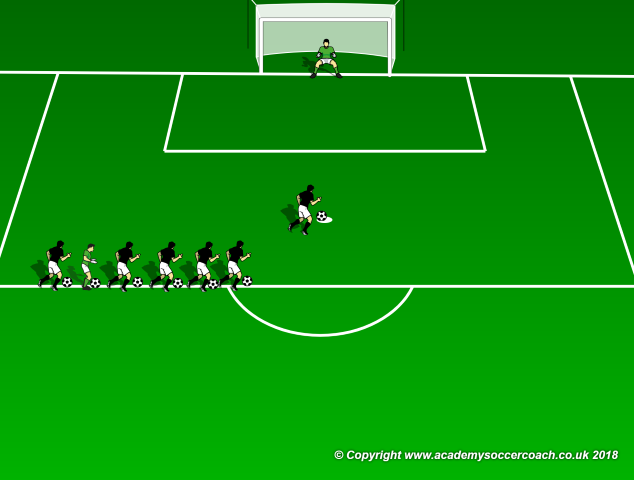
Get Better on PKs
By Mike Smith –
There is no higher pressure situation for a keeper to face than that of a PK. Some could argue a 1 v 1 breakaway where the attacker is coming in at speed is more challenging but I would argue since the keeper is not limited as far as movement during run of play 1 v 1 scenarios, the PK gets the edge. Obviously most coaches know this and thus, most teams and keepers practice PK s regularly, so the issue here is not “ are you practicing pks, “ but “ HOW are you practicing pks”? Here are two specific tricks which will vastly improve your keepers stop percentage AND your teams shooting percentage.
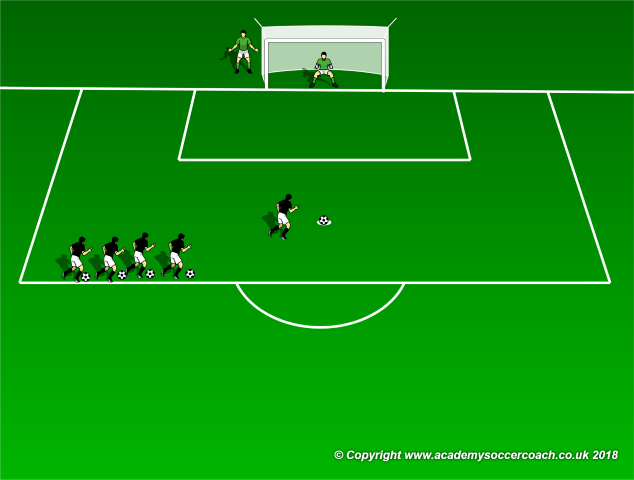
Many pk practices look like this, many of mine included. I usually work with groups of 5 shooters and two keepers as this best simulates a shoot out, with the keepers alternating shots. My remaining players run passing lines and do touch work until each shooting unit has done 3 progressions. Here is trick #1 : My shooters TELL the keeper which way they are going. Here is why: Many times, keepers do not learn how to react the right way because they spend too much timing guessing which way the kick is going. By telling them at practice, especially early in the season ( or pre season ) the keepers get a chance to commit to the proper form going to the left, right, high and low. It also helps with the shooters accuracy and how the shooter deals with pressure.
The second trick helps with moving to the ball with a slight forward angle and the most common pk fault, the keeper leaving the line early. With the same basic practice set up, make the keeper start INSIDE the goal.
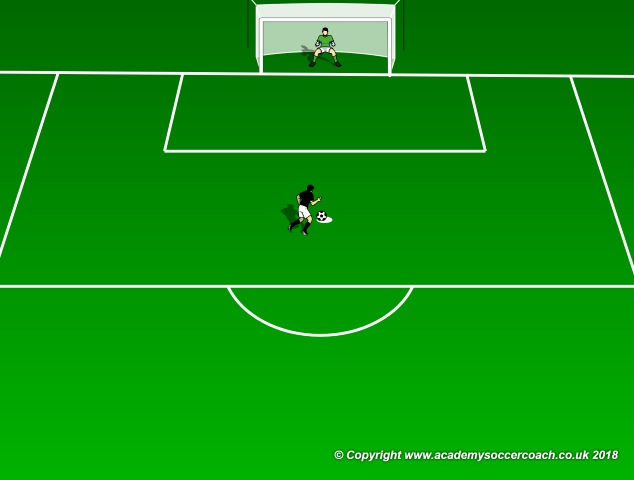
As shown above, by starting the keeper inside the goal, just a couple feet or one step, yet still asking them to keep the ball in front of the line, it forces them to add a slight forward angle to their lunges and parries. This forward angle can be the difference in a ball being pushed out clear or tipped, spun and then going in. It also allows for any second chance attempts to be made before the ball actually crosses the line. The setup is the same as in the previous activity.

To make this a complete session, have each keeper face 7 consecutive pk attempts, from the line WITH OUT being told the direction. Be sure to include the keepers in the rotations of 7.
Coaching Points
The focus is on keeper form here and committing to a direction once they have tried to make a read ( guess )on the shooters intended shot. The coach should encourage the keeper to be as big as possible, use a slight forward move and aggressively parry shots away.
By Mike Smith
Currently the Head Coach for University Heights Academy Boys Soccer in Hopkinsville, KY , Mike is in his 14th year as a high school head coach with 23 years coaching experience overall and 34 year as a student and fan of the game. He holds a USSF D License.
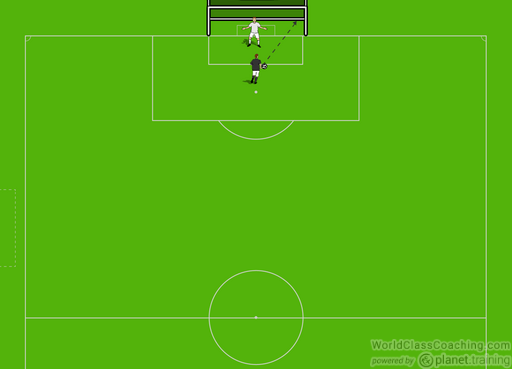
The Art of Saving a Penalty
By Josh Jones-Keen –
Often teams practice penalties but the focus is always on trying to score them. Outfield players can practice penalties to the hilt but nothing can replicate the pressure of doing it in a real game.

As for the Keeper there is no pressure. Not in training and not in a game. If you’ve got to penalties your Keeper has already done their job of not conceding in actual time. Now is the time to do the right thing and hope you get some luck on the way. This is the mentality that must be coached for majority of Keepers. Keep the pressure off so they don’t freeze.
The first drill works on the Keepers saving technique. The coach starts by pointing to a corner and then tossing the ball to that corner. This can progress to the coach drop volleying to add more power and precision to the ball. To then progress the coach could point to one corner and play the ball in the other corner. Can the Keeper keep calm and remember it’s going the other way, and then the Coach should play the ball either side without pointing. Can the Keeper now judge the body shape of striker and work out the right way?
Distance is the key here; I often start 8/10 yards away and make it harder and faster the closer to the goal, to within 5 yards. Then start working back out to I’m striking them on the drop volley around the penalty spot.
[wpsharely id=”821″][/wpsharely]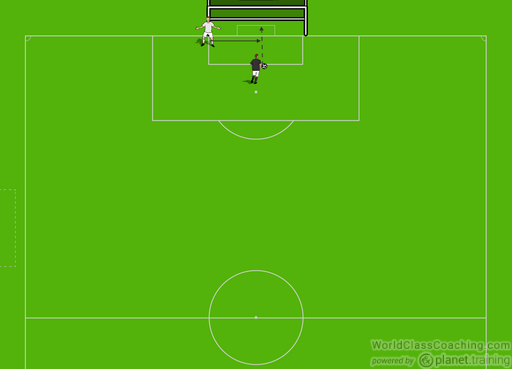
Here the Keeper starts on the other side of the Goal and the Coach strikes the ball in to the centre of the goal. The Keeper must dive across the goal to make the save. The main key point here is the dive.
To get the perfect takeoff the Keeper must propel them with the correct leg. With the Keeper facing the striker their inside leg facing towards goal must be used to push off. If the outside leg is used this is what creates Keepers rotating. In a game this is bad news as it means they cannot react to the next shot but in this case it could cost precious fractions of seconds which could be the difference to winning and losing.
Coaching Points
- Watch and judge the run up, you can tell a lot about where the ball is going based on the strikers run
- Make your decision as late as possible. React quickly.
- Dive well; know how quick you can cover ground. Push off with the inside leg
- Go two handed, move them quickly if needed
- Use the momentum of your arms pushing through to push the ball wide
By Josh Jones-Keen – Josh has been coaching Goalkeepers for over a decade & has both Outfield and Goalkeeper coaching awards from England and Scotland. He’s coached at a number of levels from grassroots to semipro and currently coaches non league Women’s team as well as a local academy.
